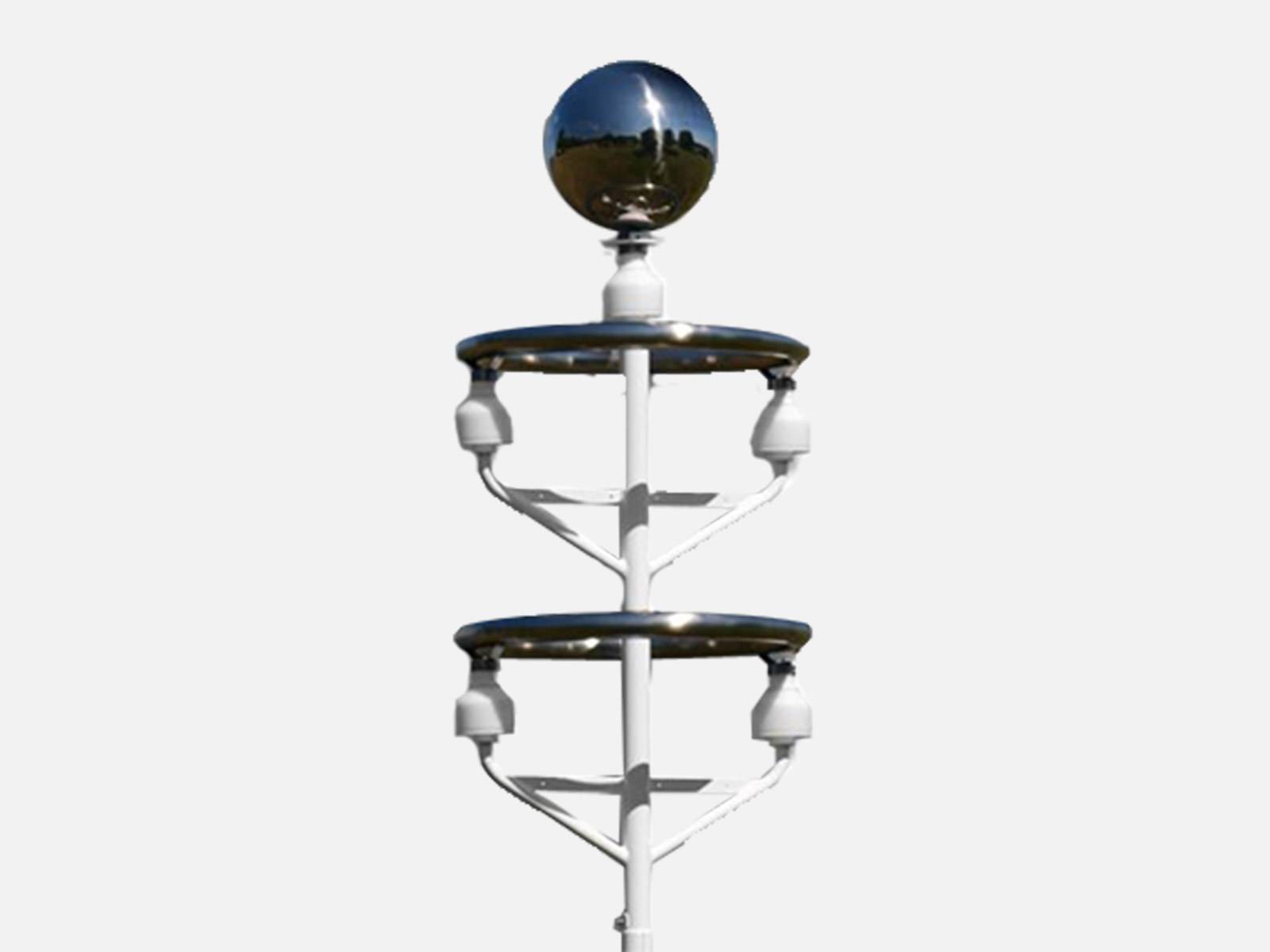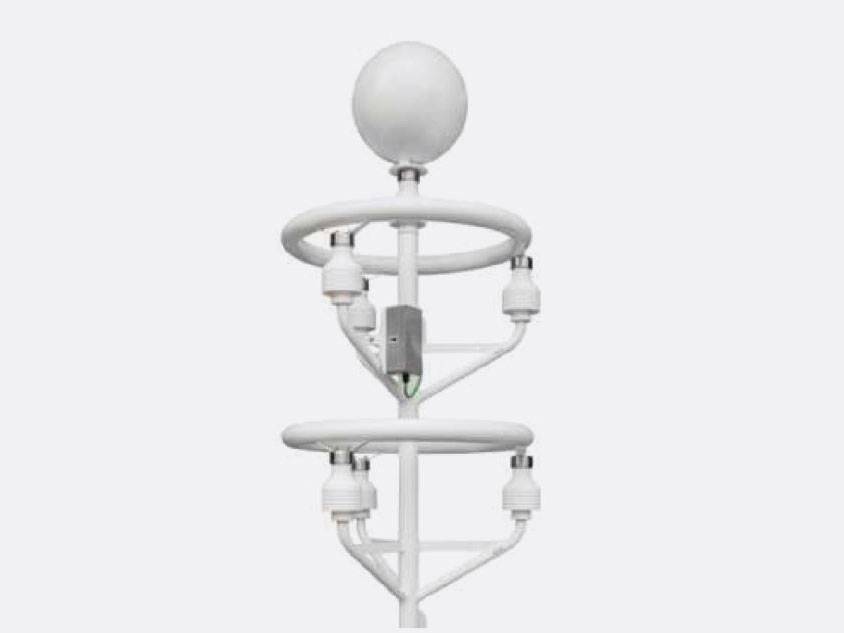

The BTD-300/350 is a standalone sensor that reliably detects the presence of all forms of lightning to a range of 83 km. The unique quasi electrostatic operating principle gives the detector a very low false alarm rate and the ability to warn of the risk of overhead lightning. Virtually maintenance free, the BTD-300/350 can operate with the supplied PC compatible display software, seamlessly integrate with sophisticated weather monitoring systems or directly activate local warning devices.
Virtually all commercially available lightning detection sensors and systems use the reception of radio waves generated by lightning discharges as the primary detection technique. Whilst providing a sensitive method of detection the many other sources of radio waves such as arcs from electrical equipment, vehicle ignition systems and fixed or mobile transmitters can result in very high false alarm rates.
Lightning detection networks resolve this problem through the use of multiple sensors spaced tens or hundreds of kilometres apart combined with signal processing and triangulation. Such networks are typically very costly to install and operate and are therefore only usually operated by national weather services. Standalone radio based lightning detectors often employ secondary measurements such as optical flash detection in an attempt to reduce false alarms and employ complex signal analysis to estimate range. These techniques are only partially effective, giving these older technology standalone lightning detectors a poor reputation due to their high false alarm rate and poor distance accuracy.
The BTD-300/350 uses quasi electrostatic measurements to avoid the problems associated with the detection of lightning using radio waves and to provide the ability to issue warnings prior to the first discharge.